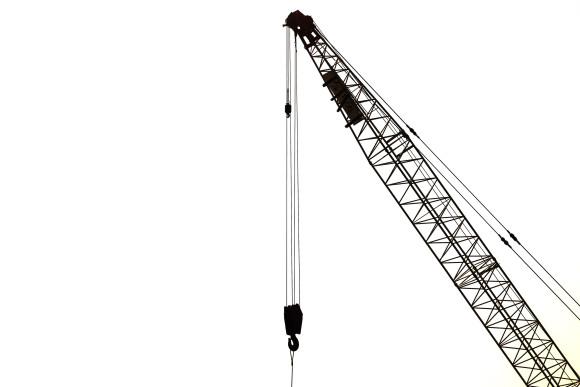The Department of Buildings of the City of New York’s (DOB) recent move to better regulate crawler crane operations in New York City has led to concern for some in the insurance industry that a stricter regulatory environment could make a difficult coverage area even more challenging for insurers, according to several industry participants.
The new requirements resulted in an ongoing lawsuit filed last month against the DOB and its commissioner, Rick D. Chandler, claiming they are too burdensome for crane manufacturers and operators – a criticism echoed by some in the insurance industry.
“With this new regulation, claims could theoretically improve, therefore improving underwriting, but administrative costs will go up as well. I do not personally believe insurers will hustle back into New York due to these new regulations,” said Jeffrey Haynes, senior vice president and crane and rigging practice leader at USI Insurance Services. “This will not be a positive thing for insurers to want to jump back into writing cranes.”

The lawsuit, filed in the Supreme Court of the State of New York by the Building Trades Employers’ Association on behalf of its members, comes after the DOB issued a June 2016 Commissioner’s Order containing new requirements for crawler cranes.
The order was issued in response to a February crane collapse in New York which killed one person. Following the crane collapse, New York City Mayor Bill De Blasio formed a new working group, the Crane Safety Technical Working Group, to recommend policies to improve crane safety.
“The City’s crane rules are there to protect people’s lives,” a DOB spokesperson said in an emailed statement to Insurance Journal. “We look forward to reviewing this action and are confident we will prevail.”
Challenges for Carriers
Several insurance industry participants have expressed concern, however, that higher costs associated with regulatory compliance and recordkeeping, coupled with an already present risk for insurers of construction projects involving cranes in New York City, could push insurance carriers out of this coverage area.

“The market of carriers available to cover projects that involve cranes in New York is already very small,” said Anthony Kammas, Professional Insurance Agents of New York (PIANY) secretary and principal at Skyline Risk Management. “This regulation is putting more burden on the crane manufacturers and operators, which in turn adds additional cost to their underlying insurance. The premiums are going sky high, and a lot of the carriers are putting crane exclusions on their policies because they don’t want to deal with anything that involves cranes. If that continues, there will be a tremendous increase in premiums.”
New York is an already risky place for construction projects due to its density, and a stricter regulatory environment could negatively impact the risk/reward profile for insurers of construction projects involving cranes, according to Allen Wolff, shareholder at Anderson Kill.
“It’s a big question mark right now, and a lot of people in the industry are legitimately concerned they may face this increased expense but see no significant decrease in accidents,” he said. “At that point, regulations are burdensome and impose additional cost with no real reward. New York has always been a place where insurance is expensive and difficult to obtain, and there are some insurance companies that are probably disinclined to take that risk in this environment, whereas they might be more inclined to take that risk in a different environment.”
Push for Flexibility
One aspect of the order that many in the industry view as particularly burdensome is a one-size-fits-all approach, according to Wolff.
He pointed to one example in the lawsuit highlighting a rule in the Commissioner’s Order, which restricts crane operations in winds of 30 mph or greater. Although this DOB rule has been in place since 1968, it has rarely been enforced, according to the court document.

“Crawler cranes come in all shapes and sizes – they can be small enough to reach a three- or four-story building or tall enough to go up to a 15- or 20-story building,” Wolff said. “To apply the same standard across the board doesn’t seem, at face value, the most prudent way to go about it.”
Enforcement of the 30 mph rule could significantly increase construction costs without providing much corresponding benefit, since frequently returning cranes to non-operational mode can be risky, according to the Building Trades Employers’ Association in its court filing.
“High winds can cause a crane payload to act like a sail and move unexpectedly, imperiling the lives of workers and the public,” the DOB spokesperson outlined in an email regarding the rule.
Beyond Cost
Although some are calling for a more flexible approach to regulating crawler crane operations in New York, it is too early to tell if the current regulations will raise premiums, Haynes said. That said, any move to improve the safety of crawler crane operations in New York should look beyond cost, Kammas added.
“Obviously, regulations can be good, because no one wants to go out there and put anybody’s lives in jeopardy,” he said. “No one wants anyone to get hurt, and when the situation arises, you can’t think of dollars and cents. You need to think of how to get it resolved as safely as possible.”
One benefit that could be seen if fewer insurance companies begin entering the marketplace is unexpected upside while the industry adjusts to regulatory changes, Wolff said.
“If fewer insurance companies are coming in to underwrite the risk, it may turn out that there is such a need in the industry and such a market opportunity in underwriting, that with a few tweaks, exclusions or modifications, insurers can re-enter the marketplace,” he said. “Some insurance companies may have a really great upside.”
Although it is too early to predict any potential outcome, the best way for the insurance industry to determine how to move forward is to watch what happens with the regulations as a result of the current lawsuit, Wolff explained.
“It is possible that one of the by-products of this will be a renewed effort to have discussions and meaningful engagement around this topic,” he said. “If it gets city administrators and the DOB directly in contact with industry participants, it could lead to some modifications to these regulations that make them more palatable to the industry and yet satisfy the concerns of regulators following the accident. No one wants to see injury or catastrophe – not the industry or the city – but there has to be a balance.”
Was this article valuable?
Here are more articles you may enjoy.



 7 in 10 Actuaries and Underwriters Worry About Being Replaced by AI
7 in 10 Actuaries and Underwriters Worry About Being Replaced by AI  Appeals Court Spikes Brett Favre’s Defamation Suit Against Shannon Sharpe
Appeals Court Spikes Brett Favre’s Defamation Suit Against Shannon Sharpe  AM Best Downgrades Credit Ratings of Texas Farm Bureau Casualty Insurance Co.
AM Best Downgrades Credit Ratings of Texas Farm Bureau Casualty Insurance Co.  Sentry Buys Nonstandard Auto Insurer The General From American Family for $1.7B
Sentry Buys Nonstandard Auto Insurer The General From American Family for $1.7B 


